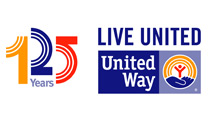 In 1887, a Denver priest, two ministers and a rabbi recognized the need for cooperative action to address their city’s welfare problems. The Rev. Myron W. Reed, Msgr. William J.O’Ryan, Dean H. Martyn Hart and Rabbi William S. Friedman put their heads together to plan the first united campaign for ten health and welfare agencies. They created an organization to serve as an agent to collect funds for local charities, as well as to coordinate relief services, counsel and refer clients to cooperating agencies, and make emergency assistance grants in cases which could not be referred. That year, Denver raised $21,700 and created a movement that would spread throughout the country to become the United Way. Over 118 years later, United Way is still focused on mobilizing the caring power of communities and making a difference in people’s lives.
In 1887, a Denver priest, two ministers and a rabbi recognized the need for cooperative action to address their city’s welfare problems. The Rev. Myron W. Reed, Msgr. William J.O’Ryan, Dean H. Martyn Hart and Rabbi William S. Friedman put their heads together to plan the first united campaign for ten health and welfare agencies. They created an organization to serve as an agent to collect funds for local charities, as well as to coordinate relief services, counsel and refer clients to cooperating agencies, and make emergency assistance grants in cases which could not be referred. That year, Denver raised $21,700 and created a movement that would spread throughout the country to become the United Way. Over 118 years later, United Way is still focused on mobilizing the caring power of communities and making a difference in people’s lives.
1887:
In Denver, religious leaders founded the Charity Organizations Society, the first "United Way" organization, which planned and coordinated local services and conducted a single fund-raising campaign for 22 agencies.
1888:
First United Way campaign in Denver raised $21,700.
1894:
Charitable institutions became exempt from the first federal act that imposed a tax on all corporations organized for profit.
1913:
The nation's first modern Community Chest was born in Cleveland, where a program for allocating campaign funds was developed.
1918:
Executives of 12 fund-raising federations met in Chicago and formed the American Association for Community Organizations (AACO), the predecessor to United Way of America.
1919:
Rochester, New York used the name Community Chest, a name widely adopted by United Way organizations and used until the early 1950s. This year began a 10-year growth period in the number of Community Chests: 39 in 1919; 353 in 1929.
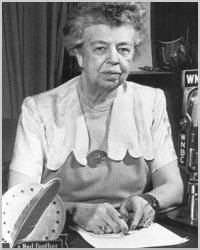 1948:
1948:
More than 1,000 communities had established United Way organizations.
1971:
United Way of America moved from New York City to Alexandria, Virginia.
1973:
The NFL and the United Way establish their partnership to increase public awareness of social service issues facing the country. In addition to public service announcements in which volunteer NFL players, coaches and owners appear, NFL players support their local United ways through personal appearances, special programs, and sitting on United Way governing boards.
1974:
United Ways raised $1,038,995,000 in America and Canada — the firsttime in history that an annual campaign of a single organization raised more than $1 billion. United Ways undertook with the National Football League (NFL) the largest public-service campaign in the nation'shistory; a major part of that campaign was Great Moments, the televised United Way/NFL public-service announcements.
United Way International was formed to help nations around the world form United Way-type organizations.
1981:
United Ways raised $1.68 billion, a 10.1 percent increase over the previous year. This figure represented the largest single-year percentage increase.
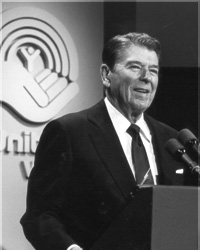 1982:
1982:
United Way ofAmerica's new National Service and Training Center opened in August, increasing the organization's ability to assist the nation's 2,200 United Ways.
1987:
United Way recognizedits centennial by saluting the America volunteer through many programs, including dedication of a United Way postage stamp by the U.S. Postal Service.
1991:
During the Persian Gulf War, a fully staffed Operations Center at United Way of America worked closely with other organizations to ensure that those in need received help.
1992:
William Aramony resigned as president and Kenneth W. Dam served a interim president and chief executive officer.
Former Peace Corps Director Elaine L. Chao was selected as United Way of America's president and chief executive officer: the first Asian-American and first female to assume this position.
1993:
A national conference on Block Grants, hosted by United Way of America, provided valuable insight to nearly 250 attendees on the past and future performance of block grants, focusing on their implications for United Ways, their agencies, and the people they serve.
The corporate community is increasingly demanding easier, more cost-efficient ways to process workplace campaigns. The Board sees these resolutions as the first steps in ensuring that United Way continues to be the premier workplace fund-raiser because of its ability to change to better meet customers' needs through the use of new technology.
1994:
United Way of Americawas selected by Financial World magazine as the charity of choice in 1994 for its leadership in not-for-profit ethics and accountability.
1994 marked the first year of United Way of America's Quality Awards, modeled after the Malcolm Baldrige National Quality Awards. These awards recognize United Way organizations that demonstrated measurable progress in customer satisfaction, accountability and productivity. United Way of Allegheny County, Pittsburgh, PA, United Way of the Piedmont, Spartanburg, SC, and United Way of Southeastern New England, Providence, RI, were the first recipients of this prestigious award.
1995:
The Atlanta Committee for the Olympic Games (ACOG) announced its selection of United Way of America and the United Way system as the primary provider of community support and volunteer services for the1996 Olympic Torch Relay. In its role, United Way was responsible for assisting ACOG with the selection of torchbearers, organizing community celebrations to greet the arrival of the Olympic Flame, and coordinating volunteers for those functions.
United Way of America's Board of Governors unanimously approved the adoption of Strategic Direction for United Way: Charting the Path for Building Better Communities.
1996:
United Way ofAmerica developed two Internet products, United Way Online for local United Ways and a website for the general public.
Betty Stanley Beene was selected as United Way of America's new president and chief executive officer. Prior to her selection, Beene served as President and CEO of the Tri-State United Way.
Former United Way of America President William Aramony appeals his sentence to the U.S. Supreme Court.
In October of 1996, United Way of America identified healthy children, healthy families and healthy communities as focus areas under thestrategic plan.
1997:
Betty Stanley Beene assumes the position of President and CEO of United Way of America.
United Way of America and the United Way system were asked by the organizers of the Presidents' Summit for America's Future to join with them in leading the selection process for the 1,400 delegates from 140 cities across the nation. The focus of the Summit was to help youththrough volunteer efforts.
1998:
In 1997-98 campaigns, United Ways collectively raised $3.4 billion, boosting revenues by more than $150 million for a 4.7 percent increase over 1996-97 levels.
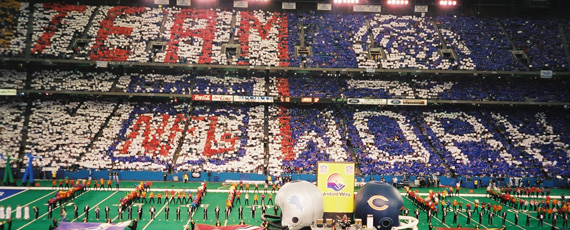
United Ways and the NFL celebrate the 25th Anniversary of their unique partnership and the longest-runningsports/charity public service announcement campaign of its kind. The partnership has enabled the United Way to share their special message with 110 million viewers during football season. Over 950 spots have aired since 1973.
1999:
Bank of America Foundation donates $50 million over 5 years to local United Ways in 22 states where they conduct business to support United Way's Birth to Work Agenda, previously called Success by 6®.
Bill and Melinda Gates donate $10.5 million to support vital United Way programs and services to strengthen the United Way system.
2000:
United Ways embark on a national brand management strategy designed to differentiate United Way brand and system. The strategy helps to reposition United Way as more than a "fundraiser," but rather as the leading community impact organization.
United Way and its partners, the Alliance of Information and Referral Systems, successfully petition the Federal Communications Commission to designate "211" for health and human services information and referral. Originally created by United Way of Atlanta, 211 is an easy-to-rememberand universally recognizable telephone number that makes a criticalconnection between individuals and families in need and the appropriate community-based organizations and government agencies.
The United Way of America Board of Governors establishes the Task Force on Strengthening the United Way System to propose a strategic directionand recommend changes to the operating processes and governing mechanisms of the United Way system. Chaired by Jack Little, retired president and CEO of Shell Oil Company and a UWA Board member, the Task Force is comprised of 21 individual volunteer and staff leaders, representing member United Ways, corporations, organized labor and UWA's Board of Governors.
United Way of America launches the United Way State of Caring Index®. The index measures the needs of American and the caring and compassion of the nation, as well as each state.
2001:
In January Betty Beene concludes her service as UWA President. UWA Chief Administrative Officer Chris Amundsen is appointed as Interim President.
In the 2000-2001 campaigns, United Way generated a record-breaking $3.91 billion in resources. For the fifth year in a row, campaign growth outpaces inflation.
In response to terrorist attacks atthe World Trade Center in New York City, the Pentagon in Washington D.C. and Somerset County, PA, the United Way of New York City and the New York Community Trust establish the September 11th Fund. The purpose of the Fund is to mobilize financial resources to respond to the pressing needs of the victims, their families, and communities affected by the tragedy. Four months after its establishment, donations to the September 11th Fund total more than $425 million.
In December, the preliminary report of the Task Force on Strengthening the United Way System -- Rising to the Challenges -- is presented to UWA's Board of Governors and the United Way system's National Professional Council (NPC). The proposed mission statement,"to improve lives by mobilizing the caring power of communities" and vision statement are adopted by UWA's Board of Governors and strongly endorsed by the NPC.
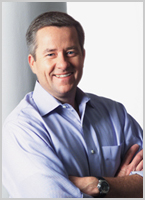 2002:
2002:
In January, Brian Gallagher assumes the position of United Way of America presidentand CEO. A 20-year veteran of United Way, Gallagher was president ofthe United Way of Central Ohio in Columbus, the 16th largest United Wayin the country. Gallagher becomes UWA's fourth president, succeeding Betty Stanley Beene, whom concluded her service to United Way on January 31, 2001.
2003:
New Membership Standards for member United Ways that are designed to enhance the level of accountability and transparency in United Way operations are overwhelmingly adopted.
United Way of America launched its what matters.® advertising campaign. what matters.® is an articulation of the commitment United Way has to creating meaningful and tangible impact in communities across America.
2004:
In response to the devastating hurricanes that ravaged the state of Florida, United Ways throughout Florida led response and recovery efforts by identifying the most serious needs in devastated communities. The Florida 2-1-1 Network responded to thousands of telephone calls directing victims to services such as shelters, food, medical assistance, disaster preparedness and response activities, post-disaster assistance, and recovery information. Local 2-1-1 operators also matched volunteers with opportunities to give help in affected communities.
The tragic tsunami that struck South Asia focused attention on that area of the world. The United Way Coordinated Crisis Response Team worked collaboratively with staff from United Way International, United Way of America, and United Way affiliates in India, Indonesia, Kenya, Malaysia, and Thailand to collectively respond to the Indian Ocean communities impacted by the disasters.
2005:
United Way of America updated its Standards of Excellence. First adopted in 1973 andlast updated in 1988, the Standards -- which provide a comprehensivedescription of benchmark standards and best practices -- reflect the organization's strategic shift from its traditional role as a fundraiser to a new mission focused on identifying and addressing the long-term needs of communities.
In conjunction with Civitas and the Ad Council, United Way of America introduced Born Learning, an innovative public engagement campaign designed to provide parents and caregivers with the resources they need to create quality early learning opportunities for young children.
 2006:
2006:
United Way of America and MTV created Storm Corps, an Alternative Spring Break program that invites young people to help United Way rebuild the Gulf Coast after the devastating hurricanes of 2005. Nearly 100 young adults traveled to Biloxi, MS, and Foley, AL, to assist with rebuilding and recovery efforts.
2007:
The United Way Financial Stability Partnership™ was introduced. The national initiative will empower low- to moderate-income people to achievelong-term financial stability that leads to independence. United Way annual revenue topped $4 billion for the first time, continuing its status as the nation’s largest charity.
2008:
United Way introduced the bold goals for the common good focused on education, income and health, and LIVE UNITED, a new call to action for everyone to become a part of the change.
2009:
United Way International and United Way of America came together to create United Way Worldwide, the largest privately-funded nonprofit in the World, with more than 1,800 United Ways in 41 countries and territories.
2011:
United Way Worldwide signed a partnership agreement with the China Charity Federation increasing the reach and ability of the worldwide organization to create opportunities for a better life for all. The organization also launched its U.S. volunteer call to action with the goal of recruiting one million volunteer readers, tutors and mentors to advance United Way education goals.
2012:
United Way celebrates its 125th anniversary and enters into partnerships with CNN and CNN international to share the LIVE UNITED message in communities around the world.
